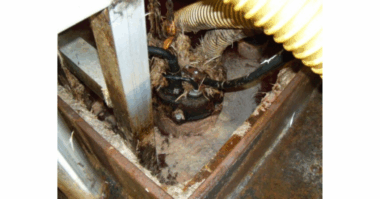Resource recovery is a growing focus in the wastewater industry, with biosolids—also known as sewage sludge—serving as a cornerstone for nutrient reuse strategies. Besides being a feedstock for emerging technologies like anaerobic digestion, biosolids have found a second life in agriculture for decades. As of 2018, more than 50% of the U.S.’ municipal biosolids have been spread on farm fields, composted, or processed into fertilizer. This approach benefits both wastewater utilities and farmers, as land application—spreading treated byproducts to reintroduce nutrients into the environment—is often significantly more cost-effective than alternatives like landfilling or incineration.
The recent recognition and coming regulation of PFAS in the water cycle has focused public attention on biosolids. The U.S. EPA appears poised to regulate in response. In June 2024, the agency released a risk assessment framework for PFAS in biosolids and expects to release a report on PFAS in biosolids in late 2024. Even though the degree to which municipal biosolids contain PFAS is unsettled, increasing public skepticism over the use of biosolids in agriculture and potential regulatory testing requirements are upending the low-cost status quo of utilities’ biosolids disposal. Compliance with PFAS regulations will complicate biosolids management for utilities, creating opportunities for companies that can help utilities navigate such challenges.
Here are a few things to consider:
Utilities increasingly view municipal wastewater treatment as an opportunity for resource
recovery—a practice as old as agriculture.
Humans have spread their waste (even household excrement or ‘nightsoil’) on agricultural fields for millennia, and the crop health benefits of this practice have been documented throughout history. In the 19th century, however, growing industrialized cities installed indoor plumbing to protect public health. Out of sight and out of mind, ‘nightsoil’ was classified as wastewater rather than a potentially valuable material.
As chemical fertilizers gained popularity, Western society further lost touch with land application as a beneficial waste disposal technique. The passage of the Clean Water Act in 1972 led municipalities to construct centralized systems to treat household effluent to meet federal standards. Such systems produce large quantities of mostly pathogen-free organic byproducts during treatment, also known as biosolids.
Utilities and farmers partnered on a mutually beneficial resource recovery practice that has become ubiquitous. Farmers received inexpensive fertilizers, while utilities gained a low-cost disposal outlet. Some organizations went further, processing their biosolids into saleable products such as Bloom, Milorganite, and Loop brand fertilizers. In recent years, sustainability initiatives have expanded efforts to beneficially use biosolids to sequester carbon in soil and produce renewable natural gas.
The focus on PFAS has moved biosolids into the spotlight
Unfortunately, while conventional wastewater treatment destroys pathogens and biological waste, it fails to remove emerging contaminants like pharmaceuticals and microplastics. PFAS are no exception; the aptly named ‘forever chemicals’ make their way from household goods into treatment plants and then biosolids with little degradation.
Municipal biosolids typically contain minimal PFAS compared to those produced treating industrial wastewater; however, municipalities and landowners have raised concerns about their use on farmlands due to the enduring and accumulative nature of PFAS contamination, the stringency of the limits the EPA has set for PFAS in drinking water, and the legal designation that PFAS are hazardous.
Unprompted by the EPA, several states have moved to regulate the land application of biosolids. In April 2022, Maine notably banned biosolids’ use in agriculture entirely; however, diminishing landfill capacity and conflict with the state’s climate goals may lead to the loosening of this ban in the near future. In contrast, Michigan’s approach includes mandatory testing and use restrictions based on results. New York has since copied this strategy, which appears to be the most likely model for future national regulations. While the EPA has not yet formally regulated PFAS in biosolids, utilities may choose to reevaluate their management strategies as traditional disposal methods become more expensive or unavailable.
Solutions providers can help utilities adjust their biosolids management strategies
Many opportunities exist for companies to help utilities improve their biosolids handling. Biosolids are often more than 75% water by weight; when disposal involves off-site trucking, utilities will look to cut costs by further drying biosolids via thermal or mechanical means. Seemingly in response, the biosolids management company Synagro has expanded its drying and processing capabilities via acquisitions, most recently with its purchase of the New England Fertilizer Co. in May 2023.
Biosolids’ varying composition necessitates specialized testing methods; where required, companies like Aprisium may find opportunities to help utilities scale on-site capabilities with advanced equipment or a testing-as-a-service. Most importantly, as traditional biosolids-related revenue streams disappear or become more difficult to access, utilities will seek alternative ways to recover treatment costs.
Technologies that sequester or eliminate PFAS in biosolids while producing a saleable product are highly attractive propositions for cost recovery. For example, pyrolysis solutions like those offered by Bioforcetech aim to produce energy and usable biochar while thermally destroying PFAS. Other companies, such as 374Water, offer solutions that require minimal pretreatment and produce nonhazardous effluent. While these technologies are developing, their potential to unlock cost recovery in the face of PFAS regulations has fueled significant investment and academic study.
Regulations, like CERCLA, will add complications for risk-averse utilities
EPA’s designation of two PFAS as hazardous substances under the Comprehensive Environmental Response, Compensation, and Liability Act (CERCLA), also known as ‘Superfund,’ leaves publicly owned treatment works (POTWs) and the recipients of their biosolids in a state of legal uncertainty. Under CERCLA, utilities could be liable for substantial remediation costs if the destination of their (unknowingly PFAS-contaminated) biosolids becomes a Superfund site.
Since its designation, EPA clarified that it will focus enforcement on parties that substantially contributed to PFAS releases—namely major manufacturers and federal facilities—and does not intend to pursue parties who were unknowing receivers of PFAS. However, this does not shield POTWs from third-party lawsuits by private companies or environmental groups, nor is it a guarantee – enforcement is ultimately up to the EPA’s discretion.
In April 2024, a bipartisan group of U.S. representatives introduced the Water Systems PFAS Liability Protection Act to codify a CERCLA exemption for POTWs; despite a growing list of cosponsors, the bill has not left subcommittee review. Even if legally exempted from CERCLA, some utilities may need to defend their use of biosolids in the court of public opinion. Concerns over legal and reputational risks may make utilities more wary of untested technologies that may leave them with future liabilities beyond stranded assets.
Ultimately, concerns over PFAS will encourage many U.S. utilities to reevaluate their biosolids disposal strategies, even beyond those legally required to do so. Companies that allow utilities to expand their management options will stand to benefit.
Originally Publish in Bluefield Research




